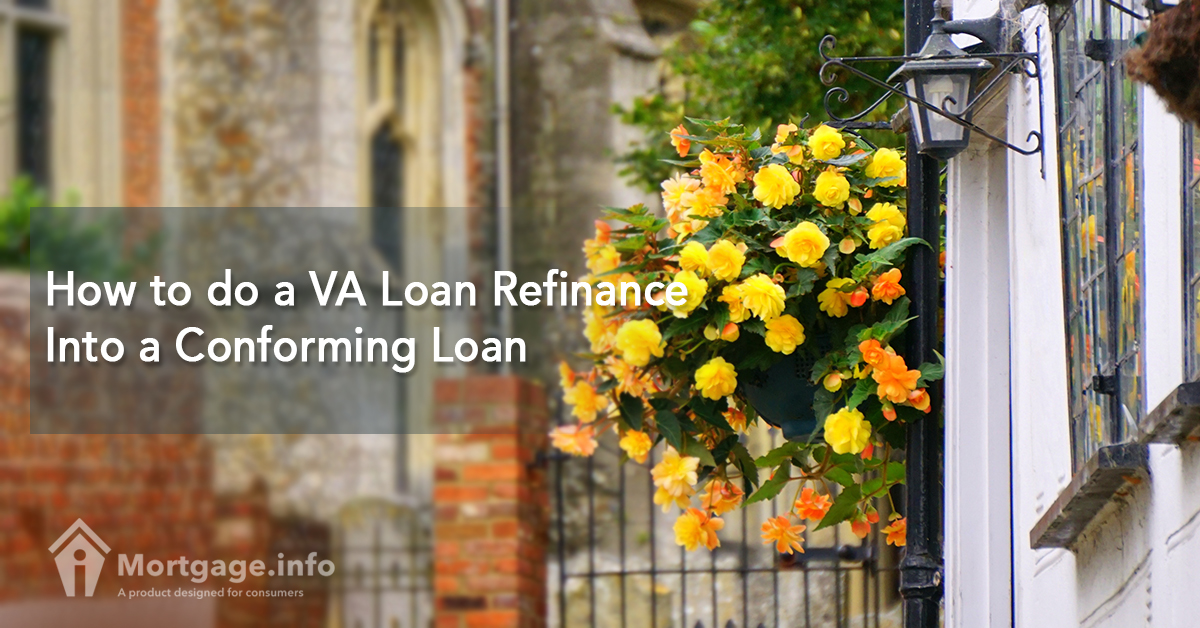If you took a VA loan out a few years ago and it is time to refinance, you might realize you have many options. You can likely refinance into another VA loan and even take advantage of the VA Streamline program. This program requires you to verify very little while helping you lower your interest rate. However, you may not want to go back to the VA program. Maybe you don’t want to pay the funding fee again or you found a lower rate with a conforming loan. Either way, there are many reasons to do a VA loan refinance into a conforming loan.
Find a Lender
The first step is to find a lender for your conforming loan. Your current lender may or may not offer conforming loans – every lender has different programs. Even if your current lender does have conforming programs, it does not mean you have to stick with them. You are free to use any lender that accepts your application and offers you a loan. No matter what you decide, you should shop around with several lenders to receive interest rate and closing cost quotes. This way you know where you stand and which lender offers the best deal.
Going Through the Underwriting Process
Going from a VA loan to a conforming loan means you cannot take advantage of the VA Streamline Refinance program. What this means is you have to start over from scratch. You have to go through the entire underwriting process again. A typical conforming loan requires:
- Paystubs covering the last month of employment
- W-2s for the last 2 years
- Tax returns if you are self-employed or are paid commission
- Proof of assets with bank statements
- Proof of your credit score
- A new appraisal
- Title search
The conforming lender will need to confirm that you are a good risk. This is done by looking at your credit score, credit history, the amount of income, and the amount of debts. The lender will determine your current debt ratio, which is your debts compared to your monthly income. They will also determine the solidity of your income. Did you just get hired at your job or have you been there for a while? Typically, conforming lenders want to see you at the same job for at least 2 years. If you changed jobs but stayed within the same industry, may qualify as well.
Conforming standards are often stricter than the VA guidelines. You may find the process a little more rigorous and even harder to qualify for. If you know you have good credit and your debt ratio is below 28/36, you may not have a hard time qualifying, but keep those ratios in mind when you try to refinance.
Secure a New Appraisal
Generally speaking, appraisals cannot be transferred from loan to loan. The exception to the rule is when you use the VA or FHA streamline refinance process. In that case, the lender can use the original appraisal. Any other loan program, however, requires a new appraisal. This means you have to pay for it again. This might seem like an unnecessary expense, but it is to protect the lender and even yourself. What if the value of your property changed drastically and you didn’t know it? If it dropped, you wouldn’t want to take out a new loan and affect the equity in your home. A bank wouldn’t want to lend you new money, either.
The new appraisal will give you a good idea of where you stand. In the eyes of the lender, it helps them to determine if you need to pay Private Mortgage Insurance. If your loan value exceeds 80% of the value of the home, you will have to pay PMI every month until you owe less than 80% of the value of the home. This is important to keep in mind when you determine if you are trying to save money every month by refinancing. PMI can cost several hundred dollars every month depending on how large of a loan you have.
Secure the Approval
The final step is to secure the approval for your conforming loan. After the lender evaluates your finances, employment, and the appraisal, they will determine if you are a good risk or not. If there are issues with your file, they may ask for further information to get the process underway. The more thorough and honest you are with the lender, the more likely it is that you will be able to work out a solution.
Once you have the approval, you are able to close on your new conforming loan. At the closing, you will not have to pay any type of funding fee. Conforming loans only have standard costs, such as processing, credit, origination, and/or discount fees. More than likely, you can negotiate these fees with your lender to keep them as low as you desire.
Deciding on a VA Loan Refinance into a Conforming Loan
Making the decision to do a VA loan refinance into a conforming loan is a big decision. The largest advantage is the elimination of the funding fee. The VA loan might have helped you secure your home with no down payment, but now that you are ready to refinance, you might not want to pay the funding fee again. You can likely find several conforming lenders with similar rates as you could obtain if you refinanced directly into a VA loan. Just make sure you shop around and get the best deal possible for your loan.
The VA loan refinance process is rather simple whether you start over with a conforming loan or choose the VA streamline refinance. Either way, you can secure a lower interest rate and start saving money every month. You can then use the savings to pay your loan down faster and have full ownership of your home sooner than the 30-year term you took out.

